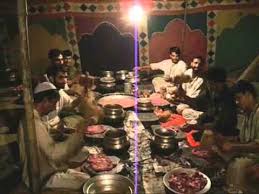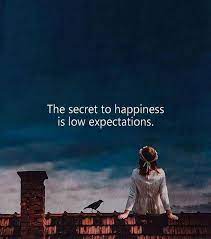Traditional sonorous symphony of Wanwun has been replaced by nuisance of mumbo jumbo musical bands and tosh singers
Marriage as a concept signifies connection, harmony and mutual co-existence. Though, it is a spiritual union of two souls but in the larger perspective, its celebration as an event involves the whole society which determines its real cultural value.
In Kashmir, marriage celebration had always been a focal point with regard to its importance for and relation to the society. Its celebration was one of the important instruments which ensured the stability, harmony, integrity and perpetuation of our culture, its ethos, our social values, traditions and rituals.
The marriages would bring together people cutting across religious, personal and social differences. The marriage ceremony in a Muslim household was never confined to Muslims only rather their non-Muslim neighbors and friends would share the equal responsibility and enthusiasm as they took an active part in the marriage ceremonies.
Similarly, the Muslims would in turn shoulder responsibilities of marriages in the non-Muslim households. Such was the system of celebrating marriages in these communities that it always encouraged communal-cum-social harmony and brotherhood!
With the advent of so-called modernity, the very concept of celebration of a marriage ceremony has undergone a paradigm shift wherein the traditional rituals, values, practices and the overall aura associated with the ceremony have completely been neutralized with the so-called new practices of pomp and show and display of wealth and material only.
In past, a marriage ceremony would involve and inspire a huge participation of relatives, neighbors, friends and the general populace, thus making it a real socio-cultural event which symbolized mutual trust, love, unity and the belief of sinking and swimming together.
It was a display of real austerity and simplicity giving utmost pleasure and comfort to the society at large.
However, now-a-days, negligible voluntary popular participation is observed in our marriage ceremonies, thus reducing them to events concerning only the close kiths and kins; hence raising questions about the marriage as being a socio-cultural event.
As a socio-cultural event a marriage ceremony would involve a fine display of traditional folk culture in the form choral women singing called “Wanwun” in Kashmiri.
The entire neighborhood and community would be in the limelight on such occasions as the aura and glamour of these celebrations would echo even there alongside the concerned household.
On the other side, these days our marriage ceremonies have turned into futile sophisticated and mechanical glittering shows as now (some of them) are held in pompous and luxurious marriage halls and hotels where the “pleasure” seems to be “bought” than “felt”.
Now, the traditional sonorous symphony of Wanwun has been pushed aside by the mumbo jumbo musical bands and tosh singers, which have become a nuisance and a source of discomfiture.
In keeping with the spirit of sharing and solidarity, the logistics (utensils, firewood etc.) for managing a feast in a marriage ceremony were arranged from within the community without any charges.
The youth would volunteer to perform all sorts of manual services like the erecting of tents, preparing tin sheds, grinding of fleshy meat, serving tea and feast and ensuring the light system in the concerned household.
Besides this, the local elders would make it a point to visit the concerned family and express their solidarity and moral support to them.
However, the modern trend of celebrating these functions has completely forgotten the age-old socio-cultural practices by hiring the services of cooks or hotels. The hired cooks are accompanied by a group that has replaced and performs all those tasks which were earlier performed by the locals.
The group helps the cook in preparing and serving the entire feast without the involvement of the locals; thus limiting the scope of the ceremony from the whole to the few.
Since Kashmir is mostly an agrarian society, so people would usually celebrate and arrange marriage functions between the autumn and winters.
By then, they would have finished with their harvest. Then they would set up for these collective enterprises socially and would anxiously wait for the proper event to unfold; thus attaching anticipation, hope, togetherness and enjoyment to it.
However, in the so-called modern times, these functions are held round the year which are devoid of any hope, wait or an aura. Rather it has become an ordinary event which comes and goes unnoticed.
As far as the serving of the feast (Saal) is concerned, then the proper norms of hospitality were ensured. The invited guests and locals were sincerely hosted and treated as the invitees of Allah and were served the lunch on time in a phased manner. The hosting of all the invitees was considered as a sacred duty and obligation.
As the ritual had it, the guests and locals would carry the Wazwaan recipes back home in paper wrappers and in cloth pieces. But now-a-days, the feast serving is considered as a mere formality and liability involving extravagant pomp and show without any respect and care to the time. Neither is it served as a lunch nor a dinner as it is served haphazardly in the late hours of the day.
Traditionally, the arrival of the Mahraaz (the groom) at his in-laws’ home would be the icing on the cake as one and all would eagerly await to be the first to catch his glimpse in the traditional groom’s attire.
Usually, the groom would be accompanied by a huge Baaraat (group of people accompanying the groom) that would be whole-heartedly welcome by one and all present out there.
The womenfolk, especially the closest relatives and well-wishers of the bride, would shower and splinter almonds, nuts, candies and Shireen (typical white round sweets) on the groom and his companions which were gleefully picked up the kids.
The welcome ceremony of the groom and his Baaraat was unique in its kind as the womenfolk would sing typical welcome choral songs in honour and dedication to the groom.
The arrival of the “Modern Mahraaz” sans any baaraat has become a mystery now as the concept and practice of the baaraat and other associated practices have been done away with in the name of the so-called austerity and reduction of extravagance on marriages.
The number of companions accompanying the groom has been squeezed to three or four; thus making it just the coming of a routine guest.
Traditionally, the send-off of the groom and farewell of the bride was a highly emotional scene engaging all the relatives and neighbors in prayers for both the groom and the bride, wishing best for their conjugal life accompanied by farewell songs carrying allegorical messages for the groom and his family to properly look after the bride with love and respect for ever.
To ensure the proper comfort, adaptation and initiation of the bride in her new home (waeriw), a close lady-relative, preferably her aunt, with love called as the Doud Mouj, would be chosen to be with her for the first seven days.
But now in the modern times, the hasty departure of the groom with his bride has literally become a non-event cum mechanical practice devoid of any voluntary participation of the general public.
The traditional marriages were comparatively successful and fruitful in terms of mutual compatibility, durability and utility. Then the concept and norm of divorce was alien given the sacrosanct nature of a marital union. Domestic clashes were uncommon and the concerned families would feel encouraged to tie up for more such relations.
In the prevalent matrimonial system, mutual incompatibility and clashes are frequent, resulting in subsequent divorces and separations. Then the marriage was an instrument and institution of socio-cultural harmony, strengthening the domestic and social fabric; which was the actual concept of a marriage in the real sense.
But now it has become an instrument of personal, domestic and social fragmentation.
The need of the hour is to introspect and save ourselves from the current wayward wave of marriage celebration which causes fissures in our domestic and social set up and to retrospect and revive our age-old culture of collective marriage celebration.
Muhammad Asif Shah / Ayaz Nabi Malik
khushasif25@gmail.com / ayazenglish.ku@gmail.com





